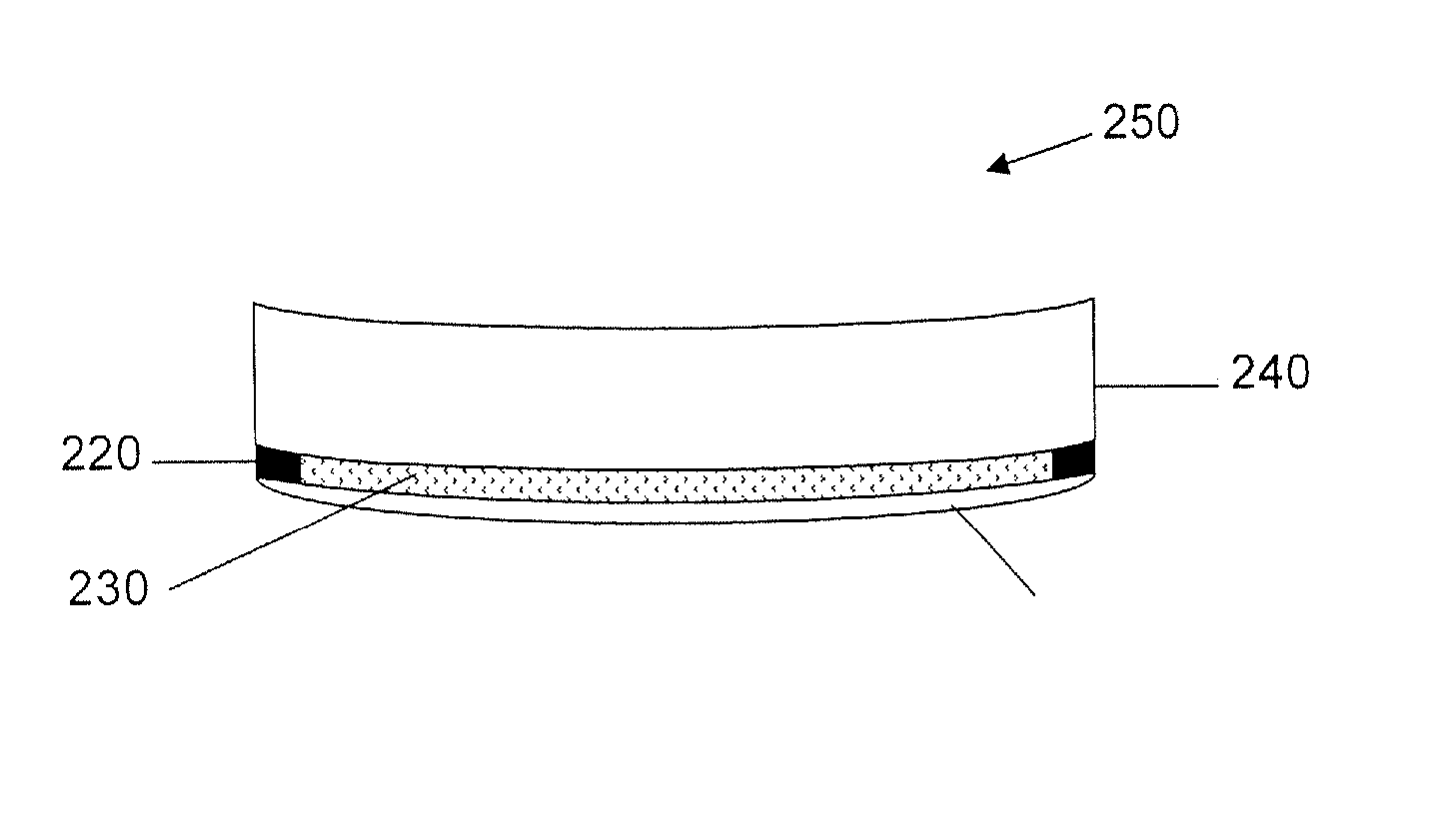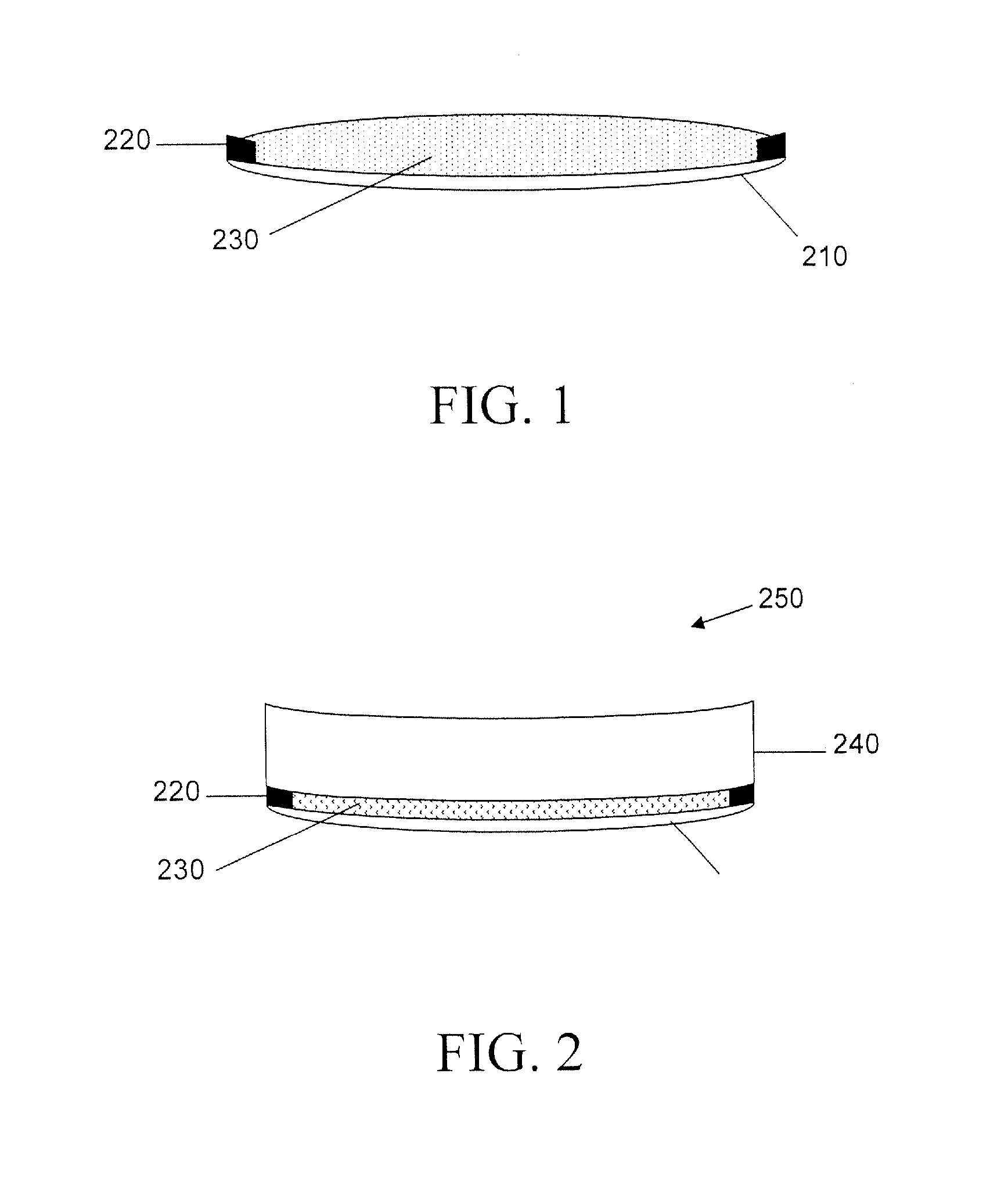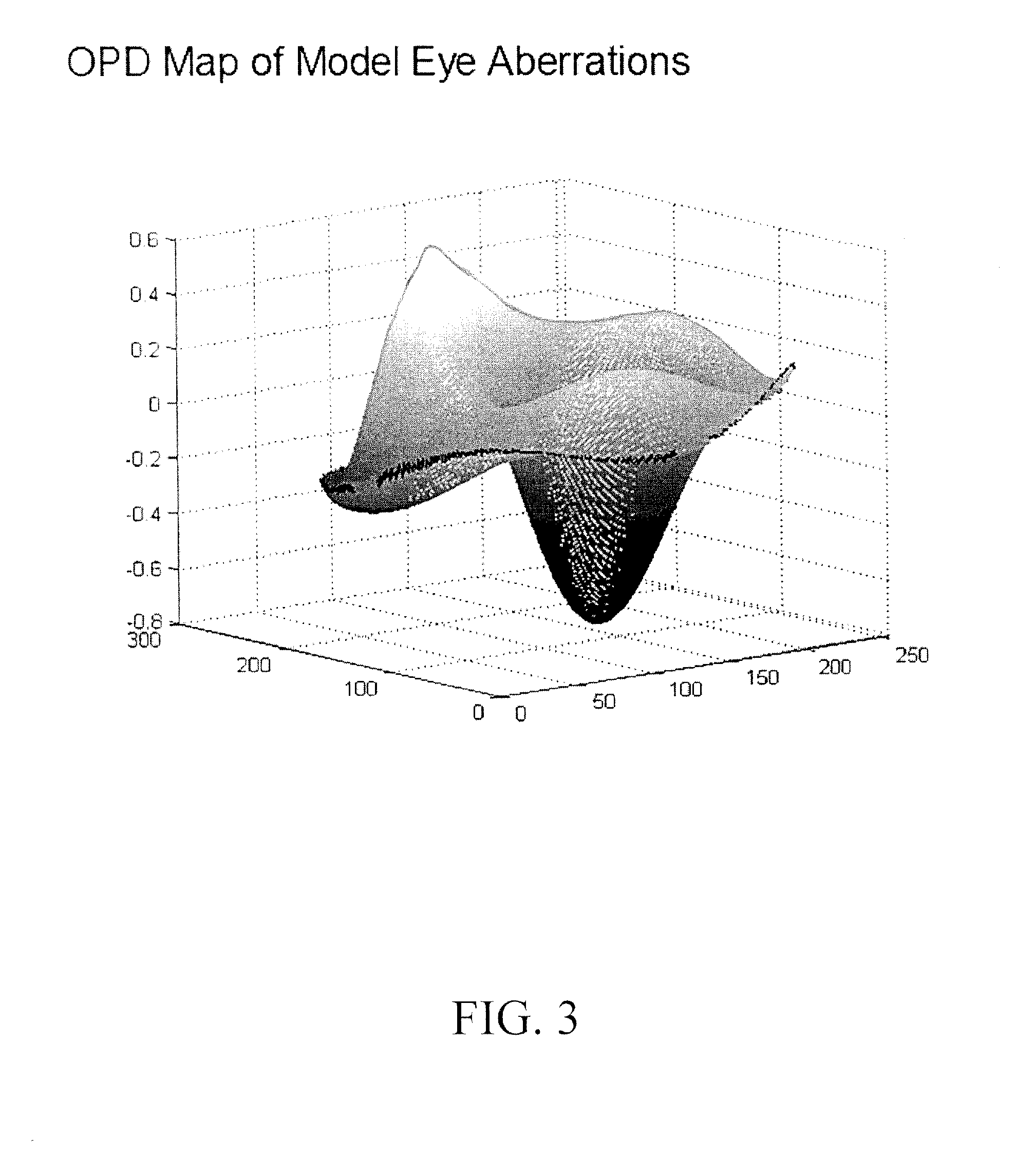Materials and methods for producing lenses
a technology of materials and lenses, applied in the field of materials and methods for producing lenses, can solve the problems of misdirecting some of the rays of objects, affecting the lens does not form perfect images, etc., to achieve the effect of facilitating the corrective effect of patients, facilitating the correction of patients, and reducing the optical path differen
- Summary
- Abstract
- Description
- Claims
- Application Information
AI Technical Summary
Benefits of technology
Problems solved by technology
Method used
Image
Examples
example 1
Wavefront Aberrator Sample Preparation
[0056] Part I: In a 500 mL flask, 100 g of poly[(phenylglycidyl ether)-co-formaldehyde], 49.42 g of diallylether Bisphenol A, 0.2761 g of Irgacure 184, and 0.0552 g of N-PAL were dissolved in acetone. The mixture was then filtered through a 0.2 μm syringe filter into another clean 500 mL flask. The filtrate was rotary evaporated at 60° C. for 2 hours to evaporate all acetone.
[0057] Part II: In another 500 mL flask, 3.27 g of tetrabutyl ammonium bromide, and 150 g of trimethylolpropane tris(3-mercaptopropionate) were dissolved in acetone. The mixture was then filtered through a 0.2 μm syringe filter into another clean 500 mL flask. The filtrate was rotary evaporated at 50° C. for 2 hours to evaporate all acetone.
[0058] A portion of Parts I and II were mixed in a ratio of 1.157:1, respectively. The Part I composition was weighed carefully in a 20 mL scintillation vial. Based on the amount of Part I formulation, the calculated amount of Part II ...
example 2
Correction of Aberrations of Optical Systems
[0060] A plano power optical element was prepared as described in Example 1. The optical element was placed in a hot box with a lens holder at 85 C. An EXFO Omnicure UV lamp with a square cross-section mixing rod was used to produce a uniform beam of ultraviolet radiation (Intensity ≈9.5 mW / cm2) which irradiated a DLP micro-mirror array.
[0061] The central region of the sandwiched gel in the lens assembly was exposed to an ultraviolet radiation pattern re-imaged from the DLP corresponding to the aberrations of a model eye (see FIG. 3) for 100 seconds. A wavefront lensometer was used to measure the OPD pattern created in the sandwiched gel 230 as a result of the ultraviolet exposure. The peak-to-valley of the OPD pattern was measured to be 0.446 microns. The hot box temperature was adjusted to 105 C and the lens was kept in the hot box for an additional 4 hours to force diffusion of uncured monomer into the regions where monomer had been d...
example 3
Diffusion Rate and OPD Growth Rate Control
[0065] Two plano power optical elements were prepared as described in Example 1. Each optical element was placed in a hot box with a lens holder at 85 C. The DLP system of Example 2 was used to expose the formulation layer of each optical element to an ultraviolet radiation pattern corresponding to the aberrations of a model eye. The first optical element was exposed to the pattern for 60 seconds, and the second optical element was exposed for 120 seconds.
[0066] A wavefront lensometer was used to measure the resulting OPD pattern in each optical element. The peak-to-valley the OPD pattern in the first optical element was 0.235 microns, and the peak-to-valley for the second optical element was 0.473 microns.
[0067] The temperature of the lens hot box was adjusted to 105 C. The first optical element was kept in the lens hot box at 105 C for 4 hours and 8 minutes, and the second optical element was kept at 105 C for 3 hours and 32 minutes to ...
PUM
| Property | Measurement | Unit |
|---|---|---|
| optical path difference | aaaaa | aaaaa |
| thickness | aaaaa | aaaaa |
| thickness | aaaaa | aaaaa |
Abstract
Description
Claims
Application Information
 Login to View More
Login to View More - R&D
- Intellectual Property
- Life Sciences
- Materials
- Tech Scout
- Unparalleled Data Quality
- Higher Quality Content
- 60% Fewer Hallucinations
Browse by: Latest US Patents, China's latest patents, Technical Efficacy Thesaurus, Application Domain, Technology Topic, Popular Technical Reports.
© 2025 PatSnap. All rights reserved.Legal|Privacy policy|Modern Slavery Act Transparency Statement|Sitemap|About US| Contact US: help@patsnap.com



